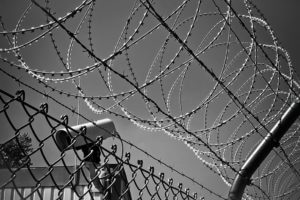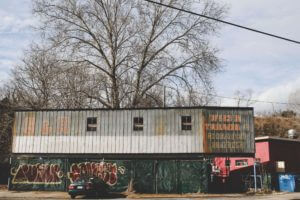California State uses Penal Code 594 to describe Vandalism as maliciously damaging, defacing, or destroying property belonging to someone else. The law only applies to property not owned by the vandal.
If a person took a baseball bat to his or her own car, then vandalism would not occur. However, if the car was leased, then the individual would have vandalized the credit company’s property. Typical examples include breaking windows, keying cars, or graffiti. The key components of vandalism revolve around malicious intent. Accidents do not qualify as a crime, even though the individual may still be financially liable for the damage in civil court.
Vandalism’s wobbler status refers to the circumstances surrounding the individual case, and the prior offenses committed by the defendant. These two factors determine whether the prosecution pursues either misdemeanor or felony charges.
While the most extreme penalties for vandalism can include prison time, vandalism convictions may also drastically impede professional development. Employers often view a vandalism conviction on a prospective employee’s criminal record as a legitimate risk, and often move on to other candidates.
Defining Vandalism in California
California Penal Code 594 defines vandalism as follows:
Every person who maliciously commits any of the following acts with respect to any real or personal property not his or her own, in cases other than those specified by state law, is guilty of vandalism: (1) defacing with graffiti or other inscribed material. (2) damaging (3) destroying
This essentially means that the State of California does not allow anyone to harm the property belonging to someone else in any way.
In order to convict an individual of vandalism, the prosecution must prove three elements of the crime beyond a reasonable doubt.
California Criminal Jurors Instructions 2900, Vandalism, explains the elements as follows:
- The defendant maliciously defaced with graffiti or with other inscribed material, or damaged, or destroyed real, or personal property
AND
- The defendant either did not own the property, or owned the property with someone else
AND
- The amount of damage caused by the vandalism was $400 or more.
The elements of vandalism are explained in greater detail below:
Malicious intent
The first element concerns malicious intent behind the defendant’s actions.
Someone acts maliciously when he or she intentionally commits a wrongful act, or acts with the unlawful intent to annoy or injure someone else.
The prosecution must prove the accused individual acted with malice against the property he or she vandalized. If the act was accidental, then the accused is not guilty of vandalism. Furthermore, malice does not necessitate a desire to break the law.
California Penal Code 594 not only prohibits malicious harm to another’s property, but also criminalizes graffiti.
Graffiti and Vandalism
Juror Instructions 2900 further explains graffiti as follows:
Graffiti or other inscribed material includes an unauthorized inscription, word, figure, mark, or design that is written, marked, etched, scratched, drawn, or painted on real or personal property.
Penal Code 594 classifies any unauthorized writing or drawing on any type of property, using any form of marking, as “graffiti” as defined under the term “vandalism.”
“Real” property refers to anything connected to the land, as well as to the land itself and anything attached to it, such as a building, a home, or a yard.
“Personal” property refers to anything else, such as a television inside a home, or a car.
Moreover, the penal code also states that, “defacement with graffiti or other inscribed material does not need to be permanent.”
Ownership of Property
The second element concerns the ownership of the vandalized property. An individual cannot vandalize his or her exclusively-owned property. However, vandalism can be charged with respect to jointly-owned property.
If the alleged vandalism appears on “public” property (such as a park bench), the jury may presume that the defendant did not own the property, and that he or she lacked permission to deface, damage, or destroy this public property. (https://www.nocuffs.com/wp-admin/admin.php?page=wpcf7ic property)
California’s vandalism law also applies to jointly-owned property. A husband or a wife can be convicted of vandalizing his or her own property if the vandalized property belongs to both spouses.
Value of Damaged Property
The final element describes the damage caused as compared to a monetary value.
The cost to repair or replace vandalized property determines if the prosecution will pursue misdemeanor or felony charges. For vandalism resulting in damage under $400, the prosecution may only pursue misdemeanor charges.
However, if the damage costs $400 or more to repair, the crime becomes a “wobbler,” meaning that the prosecution may pursue either misdemeanor or felony charges against the defendant. The prosecutor’s decision in this regard is generally based on the specific circumstances of the case and on the defendant’s criminal history.
Also, if the prosecution can prove that the defendant committed one or more acts of vandalism with the “same intention, impulse and plan,” then the damage from all the acts will be added together. If the total amount of the damage is $400 or more, then the prosecutor may charge the individual with felony vandalism.
Penalties for Vandalism in California
California has created a surprisingly complex punishment system for vandalism under Penal Code 594.
Misdemeanor Vandalism
Misdemeanor vandalism under Penal Code 594 carries the following penalties if the cost to repair the damage is under $400:
- Up to 1 year in a county jail
- Fines of up to $1,000—OR of up to $5,000 for defendants with a prior vandalism conviction
- Informal Probation
If the amount of the damage is $400 or more, the penalties for misdemeanor vandalism under Penal Code 594 include:
- Up to 1 year in a county jail
- Fines of up to $10,000—OR of up to $50,000 if the amount of the damage was $10,000 or more
- Informal probation
Felony Vandalism
If the amount of the damage is $400 or more, the penalties for felony vandalism under Penal Code 594 include:
- Either probation, with up to one year of county jail time, or county jail time of from 16 months to 3 years
- Fines of up to $10,000—OR of up $50,000 if the amount of the damage was $10,000 or more
- Informal Probation
Subsequent Convictions
Under Penal Code 594.7, if the defendant was previously convicted of vandalism on at least two occasions, and was either incarcerated or granted probation in at least one of the cases, then the defendant must serve a jail or prison sentence in the current case.
Potential conditions of informal probation for a vandalism conviction include the following:
- A driver’s license suspension of up to two years, or if the defendant has not yet attained one, a one to three year delay in the defendant’s eligibility to obtain a driver’s license
- Required counseling
- Community service, which may include personally cleaning, repairing, or replacing the damaged property
- Becoming the caretaker of the damaged property, or of another property in the community, and ensuring it stays “graffiti free” for up to one year
Defining Graffiti
Other forms of vandalism bring different consequences under California Penal Codes 640.5 and 640.6, such as graffiti with damage less than $250.
If the State-charged vandalism can be defined as defacing property with “graffiti or other inscribed material” (as opposed to the other forms of vandalism described above), and the damage costs less than $250 to repair, then the prosecutor may either pursue a regular misdemeanor vandalism charge, as described in Penal Code 594, or opt to pursue a different charge with less severe penalties, as described in Penal Codes 640.5 and 640.6.
If an individual is charged under Penal Code 640.5 or 640.6, then the potential penalties depend on how many previous California graffiti or vandalism convictions the individual has had.
First convictions become infractions, and the potential infraction penalties include:
- A maximum fine of $1,000
- Community service
Second convictions become misdemeanors if they were charged under Penal Code 594, or any other California vandalism law, and the graffiti damage cost is less than $250 to repair.
The misdemeanor penalties under Penal Codes 640.5 and 640.6 are less than those specified under Penal Code 594. They include:
- Up to 6 months county jail time
- Fines of up to $2,000
- Community service
Third and subsequent convictions become misdemeanors. If the defendant has two or more convictions under California vandalism law, and was given a jail sentence or probation for at least one of those convictions, and the graffiti damage in the defendant’s current charge is less than $250, the penalties under Penal Code 640.5 or 640.6 include:
- Up to 1 year in county jail
- Up to $3,000 in fines
- Community service
Other Types of Vandalism and Penalties
California has more vandalism laws than just Penal Code 594. The State has written several other penal code sections to prescribe different penalties for vandalism. These vandalism penalties determine the punishment based on the type of vandalism, or on the type of property vandalized. These other penal code penalties differ from standard vandalism, in that standard vandalism uses the cost of the damage to determine the penalties.
Vandalizing Places of Worship – Penal Code 594.3
Under Penal Code 594.3, vandalizing a church, temple, or other place of worship always becomes a wobbler. The cost to repair the damage does not impact the charge.
A charge of misdemeanor vandalism of a place of worship subjects the defendant to the following penalties:
- Up to 1 year in a county jail
- A maximum fine of $1,000
- Informal probation conditions, just as with standard vandalism
A charge of felony vandalism of a place of worship includes the following penalties:
- 16 months to 3 years in state prison
- Fines of up to $10,000
- Informal probation conditions, just as with standard vandalism
Vandalism Involving Caustic Chemicals under Penal Code 594.4
California considers the specific act of committing vandalism using “butyric acid, or any other similar noxious or caustic chemical or substance” as a wobbler, regardless of the amount of damage done.
The penalty for misdemeanor vandalism involving chemicals includes jail time of up to six months.
However, the penalties for felony vandalism involving chemicals can include a jail sentence of sixteen months to three years.
A conviction of either of these vandalism charges subjects the individual to fines ranging from $1,000 to $50,000, depending on the amount of damage to the vandalized property.
Vandalism On or Near a Highway or Freeway under Penal Codes 640.7 and 640.8
Penal Code sections 640.7 and 640.8 describe the following penalties for acts of vandalism occurring on or near a highway or freeway:
- County jail sentence of up to 6 months for a first conviction, or for conviction of vandalism near a highway, and up to 1 year for a second conviction, or for a first conviction of vandalism near a freeway
- Fines of up to $1,000 for conviction of vandalism on or near a highway, and up to $5,000 for conviction of vandalism on or near a freeway
- Counseling or Community service
Understanding Vandalism in California
Citizens have the right to defend themselves against criminal allegations. People can educate themselves and work with experienced defense attorneys to ensure the best possible outcome when dealing with criminal charges.
Conor McGregor’s recent acts of criminal mischief in New York City illustrate what California defines as vandalism. He maliciously destroyed property belonging to another entity. He did not own the property, and the damage amounted to well over $400.
The penalties for vandalism in the State of California vary because vandalism can be charged in many different forms. Misdemeanor vandalism involves penalties of one year in county jail and fines of up to $1,000. Felony convictions can result in jail sentences of up to one year and fines of up to $10,000.
Individuals facing vandalism charges greatly benefit from working with skilled and experienced defense attorneys. Navigating the legal landscape successfully requires diligent investigation and deliberate action.







